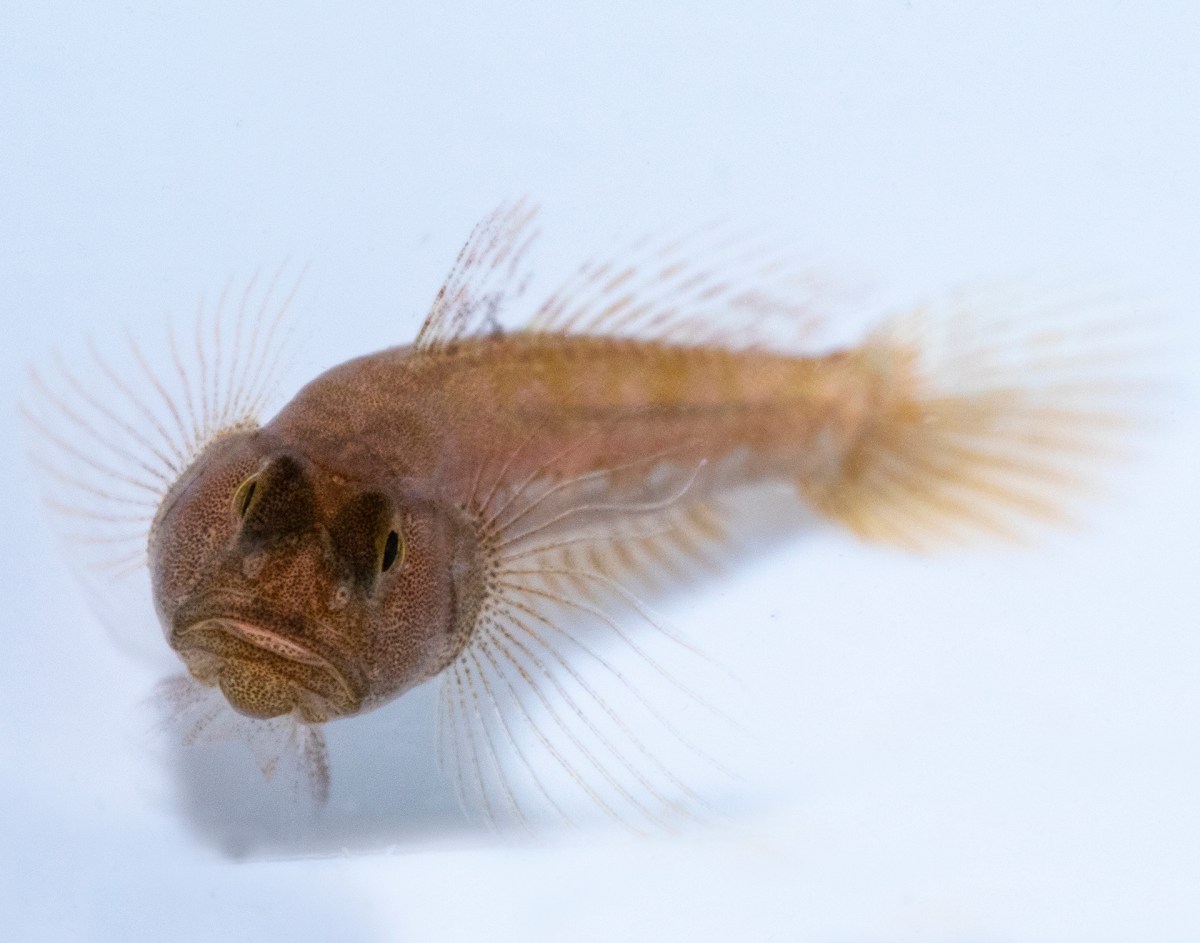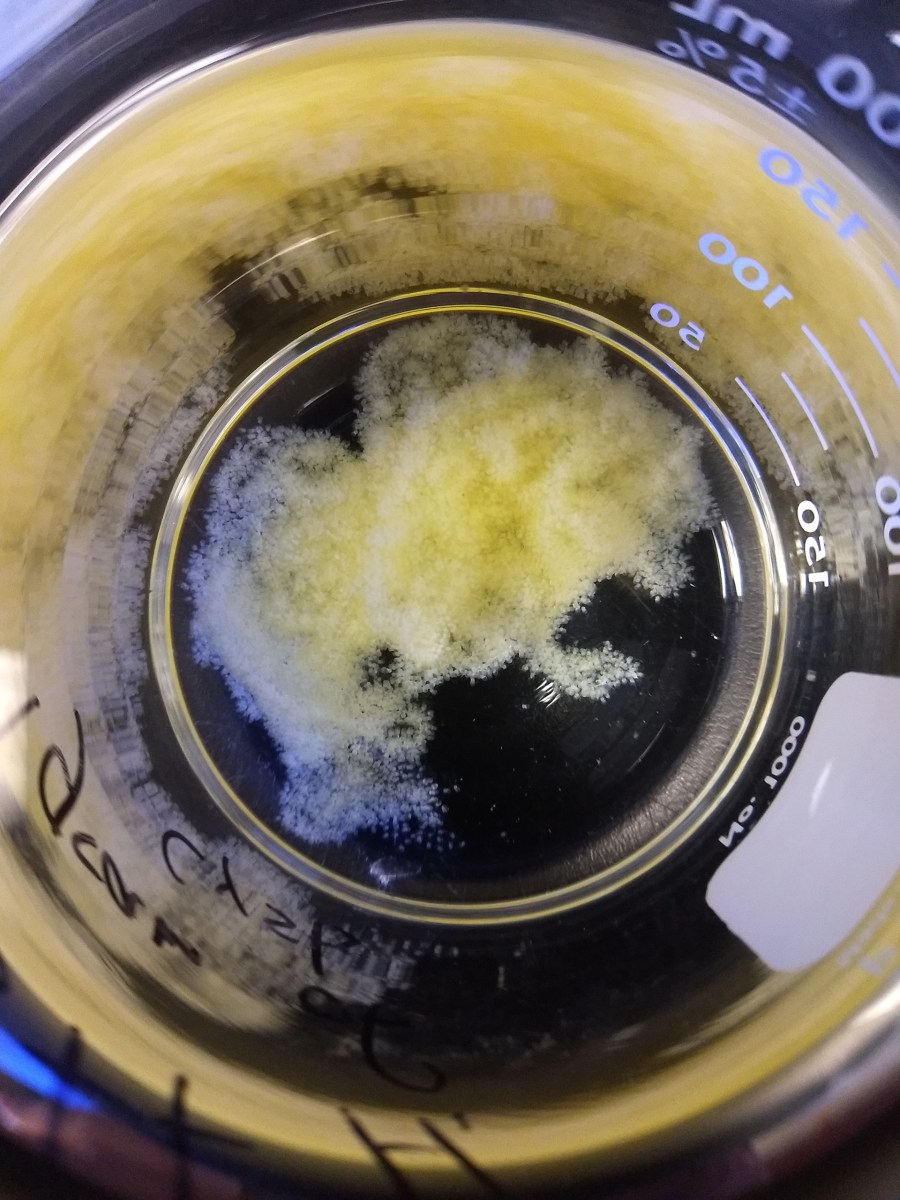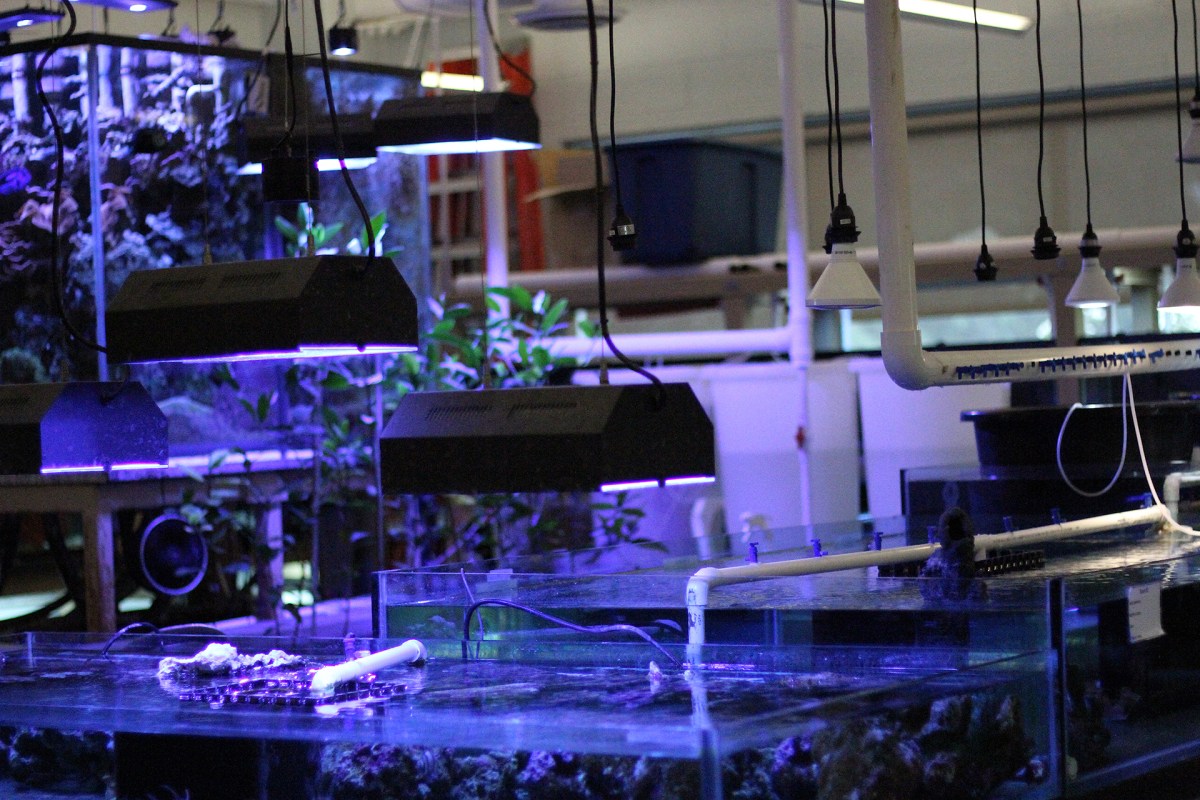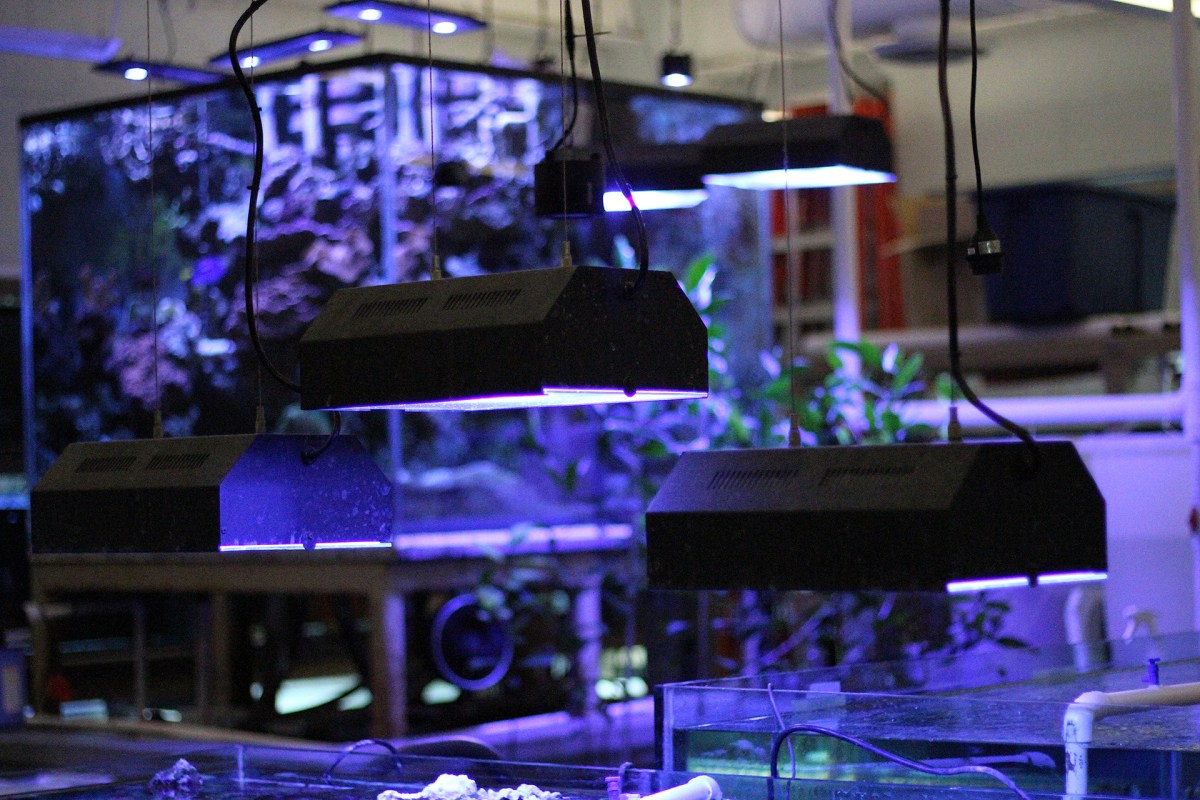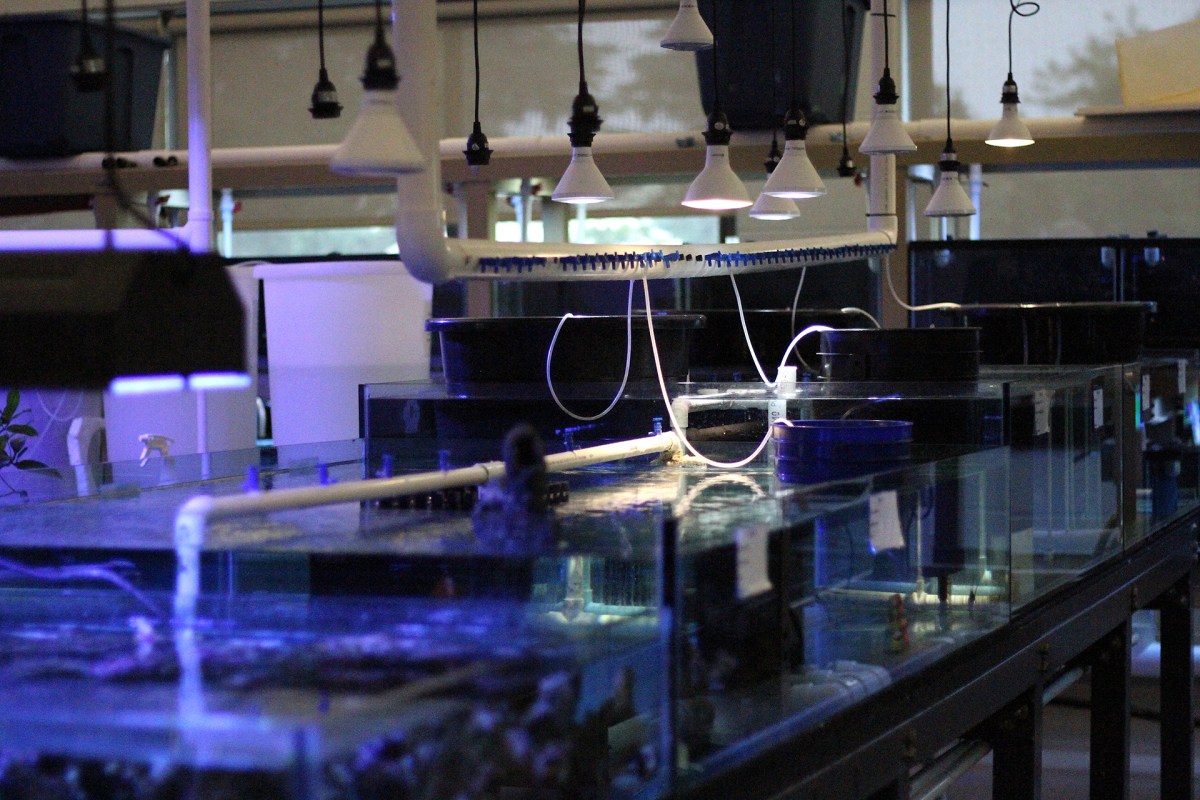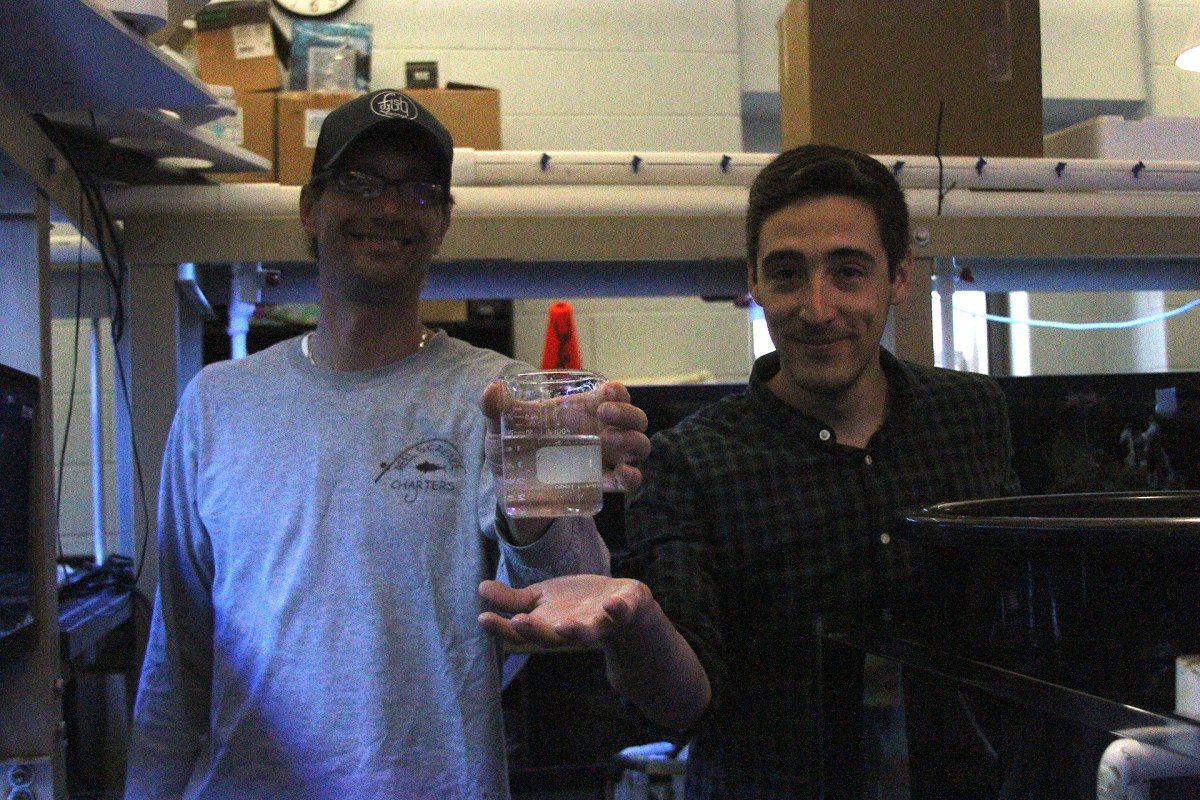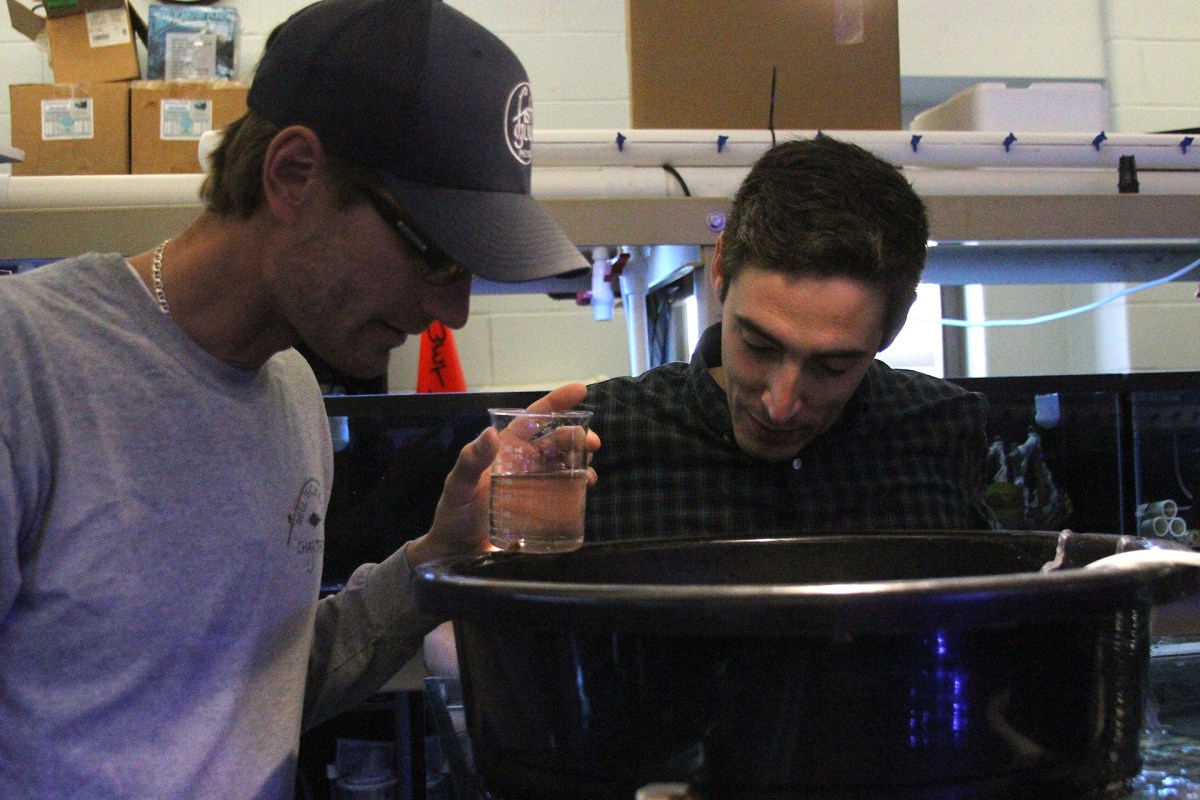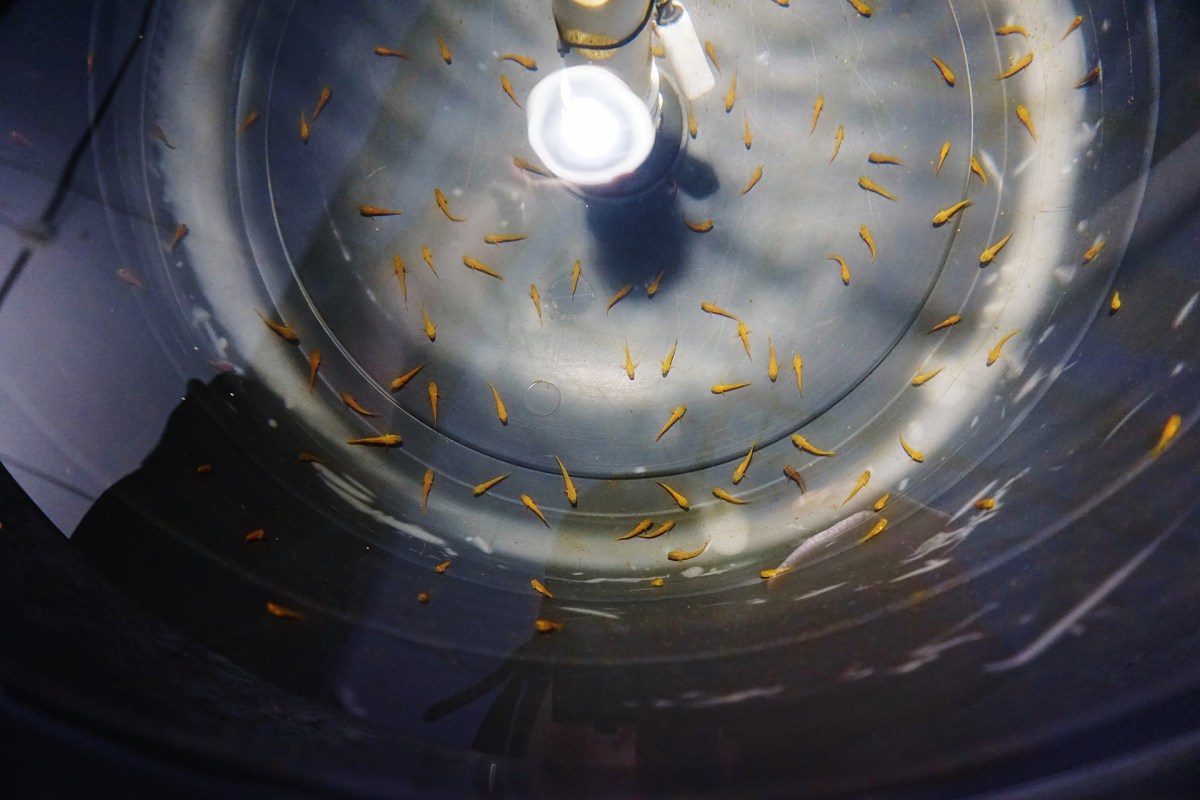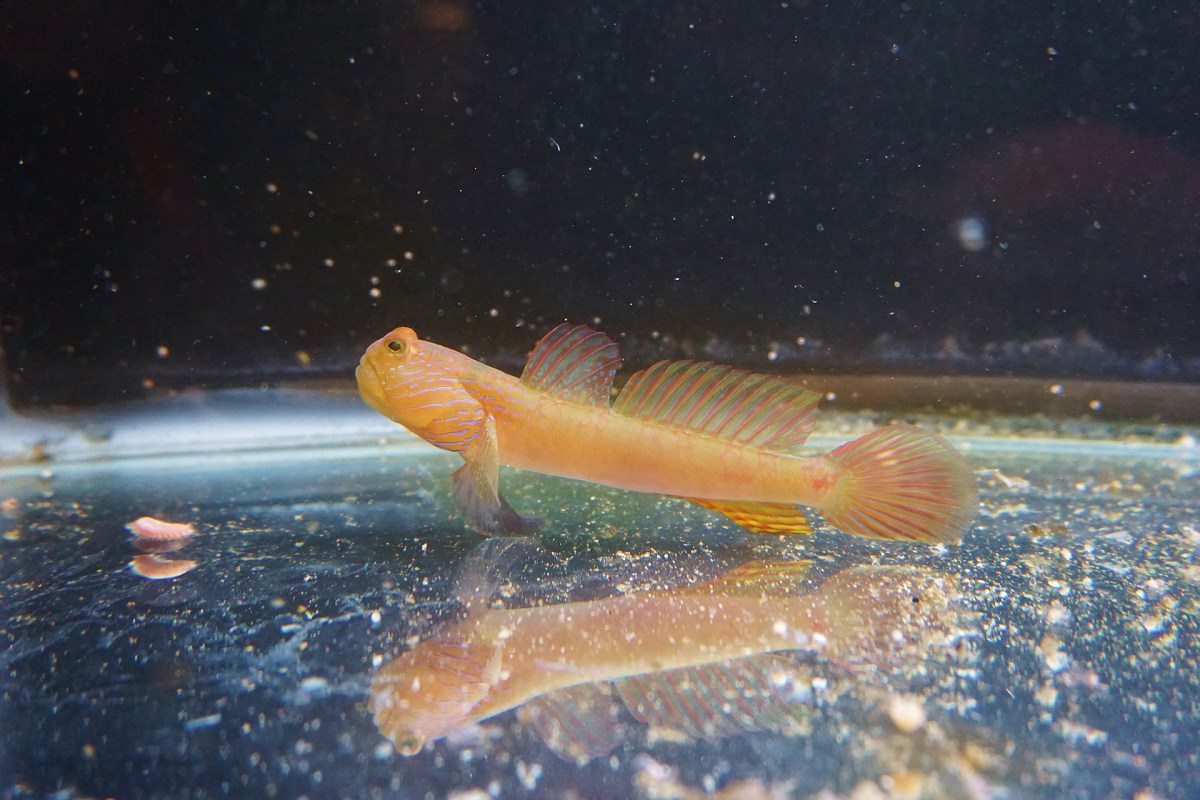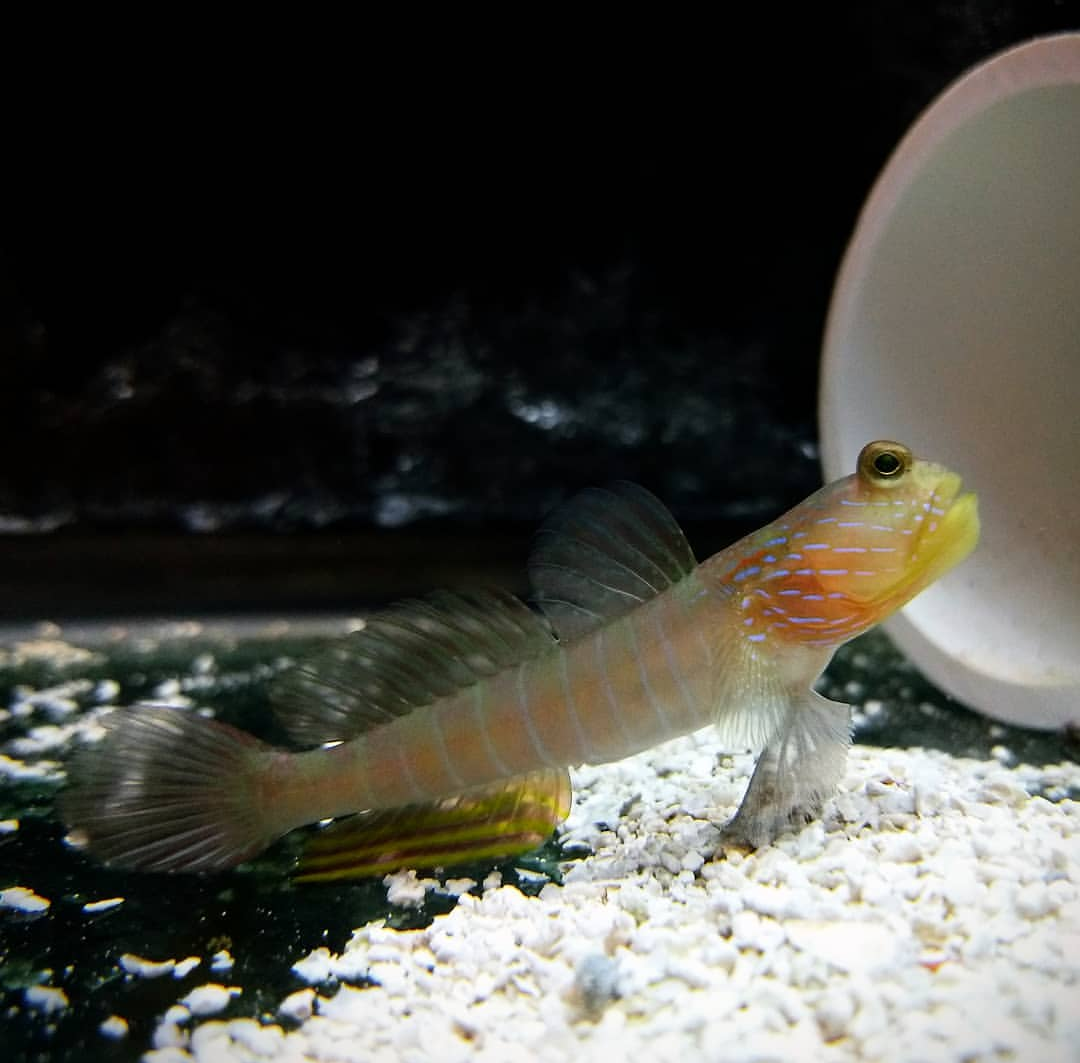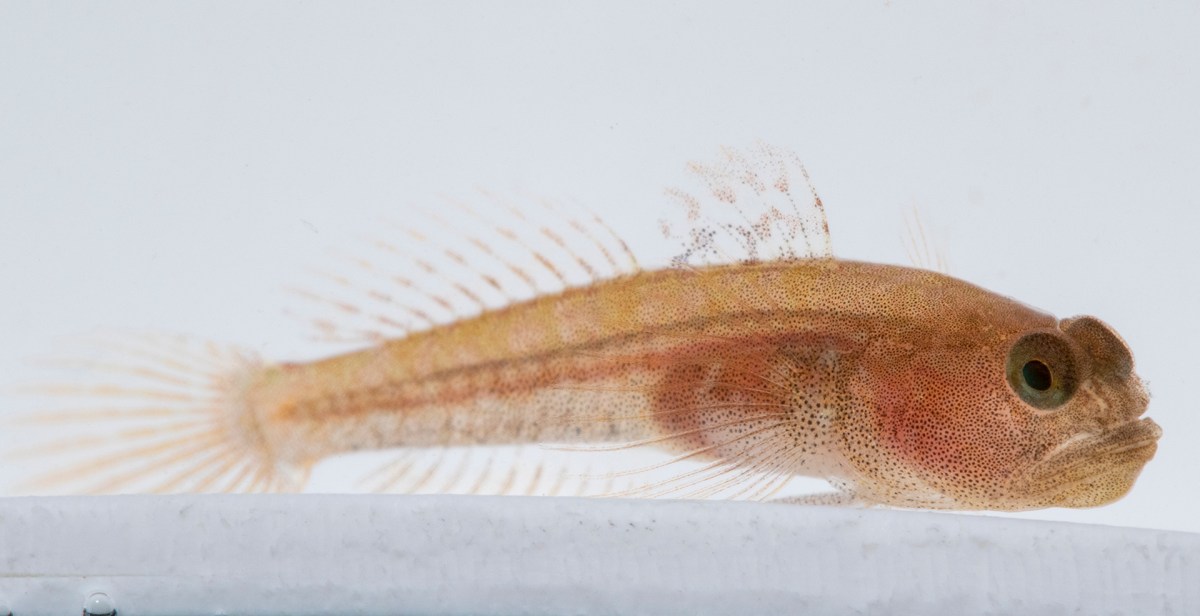Leaders Of The Wet Lab
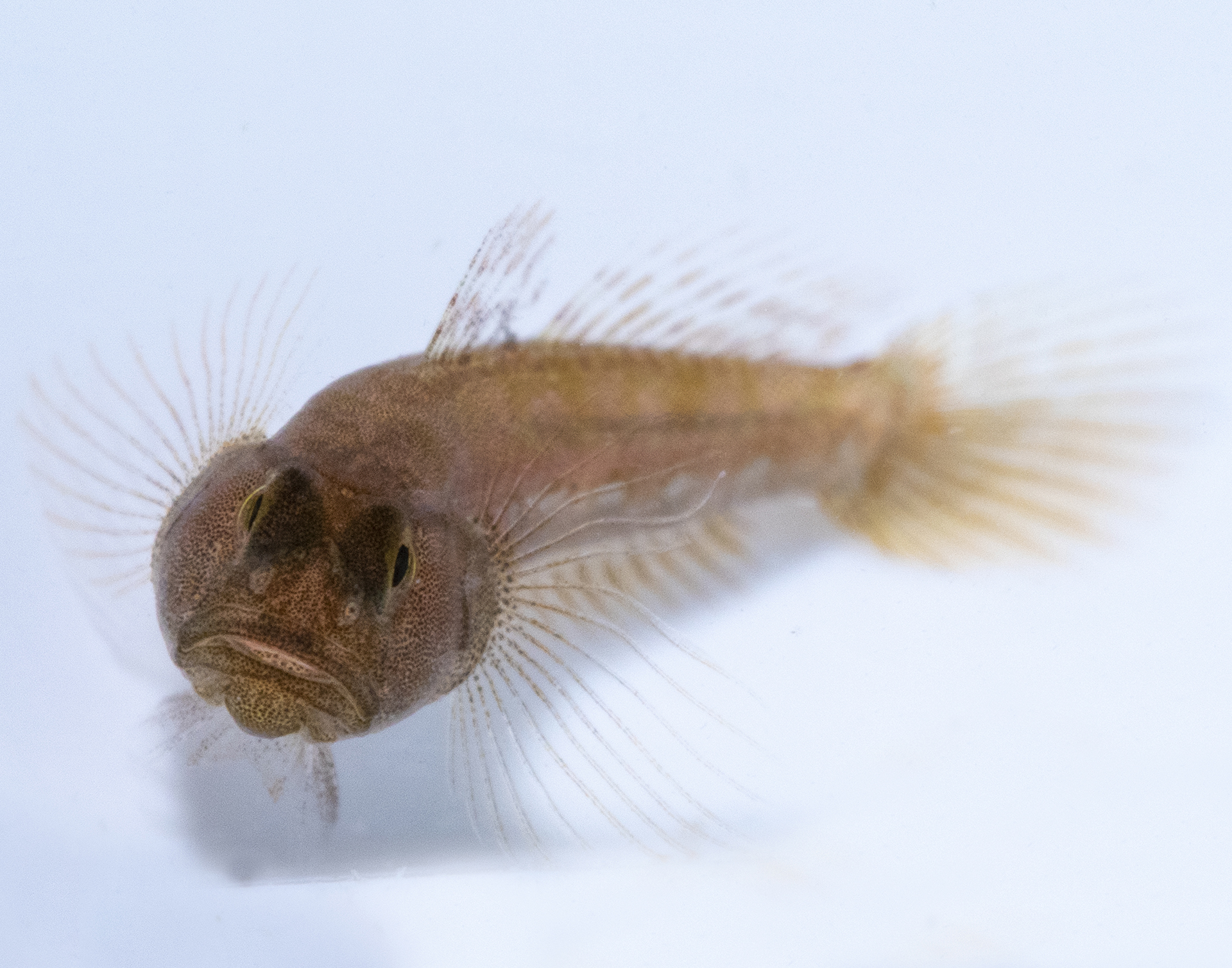
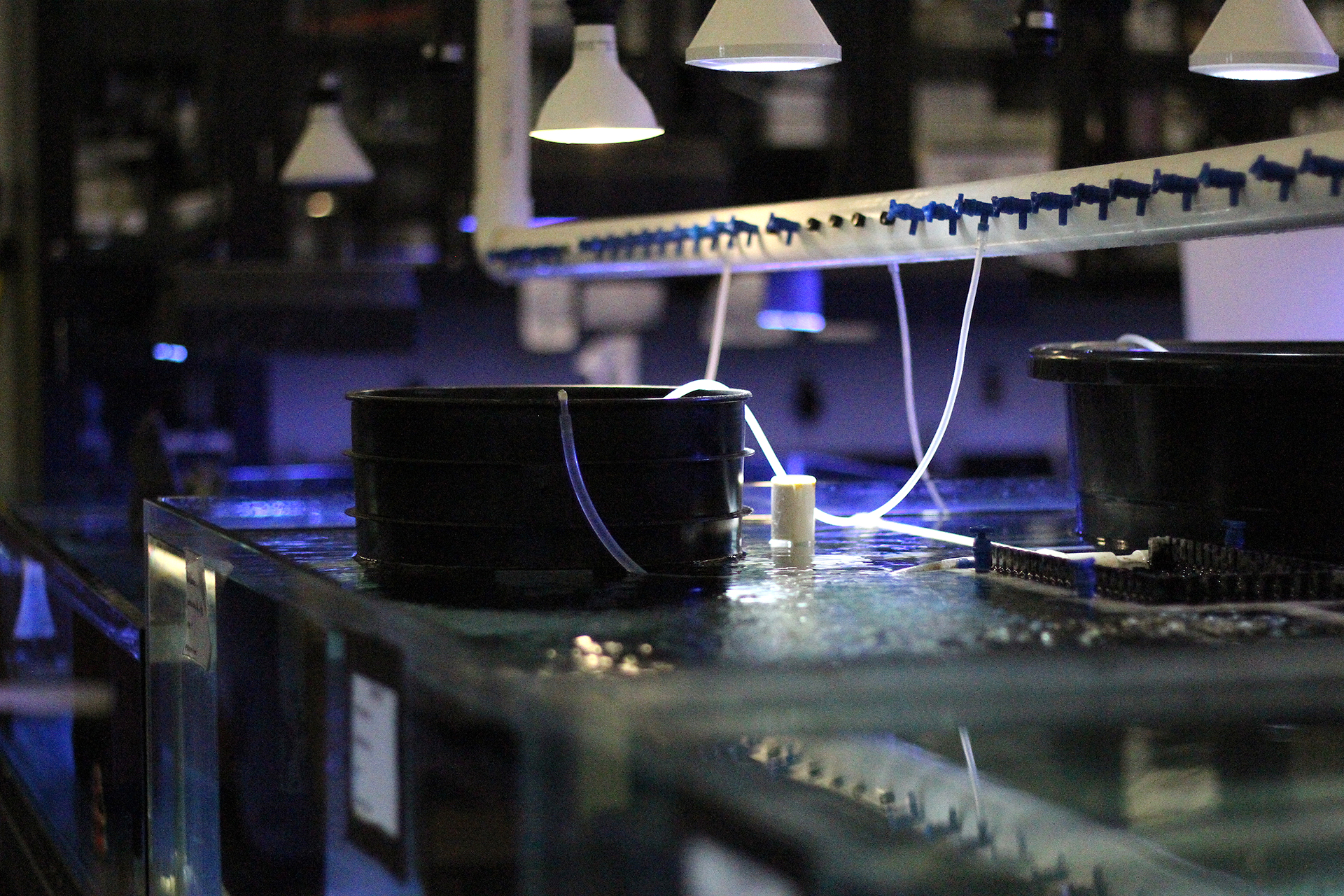
They say it takes a village to raise a child. In the case of lagoon shrimp gobies, it took two Southampton High School classes, a teacher, and an aquarist to be the first in the world to raise the species in a laboratory setting.
But the road to rearing the 150 one-centimeter juvenile fish that use a pistol shrimp’s burrow for protection from predators, but also acts as eyes for the blind crustaceans, wasn’t an easy one. Five students had worked closely alongside teacher Greg Metzger, who purchased the brood stock from a pet store, and aquarist Dan Elefante for a year to achieve the feat.
After finding eggs atop the surface of the tank a few months back, students struggled to find the ideal environment to help them develop. After applying 24 hours of light — which many species require — for 20 days, all the larvae had died before metamorphosis, which is the phase the lagoon shrimp gobies needed to complete for the project to be considered a success. Although it could take a year for the shrimp gobies to lay another batch of eggs, much to the class’s surprise a clutch of eggs was found a month later. The larvae were quickly divided to be tested under different lighting conditions, and 16 hours seemed to be a sweet spot.
Metzger was waiting for the larvae to change color as a sign of metamorphosis, although they began exhibiting characteristics of adults, but feared when he came in early one morning that the larvae were dying underneath a cloud of phytoplankton. As he reached for a washed-out larva at the bottom of the tank with a siphon, it scooted across the bottom. He immediately knew what that meant.
“I began doing the happy dance around the lab,” Metzger said. “This wave washed over me of, ‘We did it.’ This is a settled metamorphosed fish.”
The aquaculture and hatchery management teacher, who started at the school in 2001, had achieved a long-term goal of his when he began the program: to be the first to spawn something inside the school’s 2600-square-foot facility, which is currently home to 30 species of fish. It houses a greenhouse, an algae culture room, 70 oceanography system tanks, and 18 brood stock, or parent, system tanks where fish are bred. But he said it couldn’t have been made possible if it weren’t for the hard work and dedication of his students.
Never Any Doubt
Junior Sam Schneider, who was in Metzger’s aquaculture class, was tasked with maintaining the parent tank. He checked the pH levels, salinity, temperature, nitrate, and nitrite levels to ensure suitable living conditions, and scrubbed the tank clean. He said he never doubted what his classmates could do.
“Knowing the wet lab has most everything you need to successfully raise the fish, there was no doubt we could make it happen,” he said, although he admitted he was bummed when the first batch was unsuccessful, but had an idea of what went wrong. “It was satisfying to know the lighting was right the second time around, but we were still holding our breath to see if the fish would make it to metamorphosis. And when it happened, the class was excited. This meant the hard part was over and that we had finally raised these beautiful exotic fish. I was stoked to hear that our class was the first in the world to successfully raise them.”
Senior Riplee Mercer, a member of the hatchery management class, cleaned the larval fish tank, making sure there were enough rotifers and copepods, which are also raised in the lab, to feed them, and cleaned protein skimmers to keep the nitrate levels in check. Raising the zooplankton and phytoplankton was part of Mercer’s class’ responsibilities.
“When I realized we could be the first to raise these gobies, I was extremely excited,” Mercer said. “Especially with Mr. Metzger always talking about wanting to achieve something of this caliber. I knew that it would show the lab’s success as a whole and put us as an up-and-coming program that could act as a model to other schools.”
She too was never discouraged after the initial failure, saying although the larvae are finicky until they metamorphose — any change in temperature or water quality could wipe them out — she and her classmates knew they had to be careful.
“It was super exciting to have them go through the process of real science,” Metzger said. “Students had a chance to follow the scientific method through, learn to read for accuracy, and understand how to use equipment.”
Elefante added it’s helped them interpret scientific journal articles, and learn the importance of following instructions and caring for things.
“It was really neat to apply what we had learned in the classroom to an experiment on these eggs inside the lab to keep them alive,” Schneider added.
They Made The List
Elefante also played a huge role in keeping the conditions optimal and the larvae alive. He came in early in the morning, stayed late into the night, and stopped in for hours a day on weekends. He even researched for a week straight to ensure the school was the first to achieve the feat. Elefante said he scoured the internet, reading through Facebook groups, asking questions in forums, and combing through marine fish lists; he reached out to aquaculture contacts and Marine Breeding Initiative magazine editors; and talked to research labs to keep the question circulating. He said he could see the kids’ excitement grow as he dug deeper to find the answer.
“Kids were asking every day, ‘Have you heard anything yet? Do you know anything yet?’” Elefante said. “After a week no one said they got anywhere near it.”
The school and its achievement will be added to CORAL Magazine’s Captive-Bred Marine Aquarium Fish List.
“I’m so proud of everyone that helped and participated to allow us to get this achievement,” Mercer said. “When the larvae finally metamorphosed it was one of the best feelings ever. It was a lot of work and it really paid off.”
Metzger said the school’s support also aided in his program’s triumph. While marine science and oceanography projects are common across the state, the ability to show students most of the concepts taught, using the lab, is what sets Southampton apart.
And while this was one of his last initial goals, to get the program to a level where it could have a first, he now has new goals. The classes are working toward raising three other pairs of fish that have never been raised in a lab, including Rusty Angelfish, Bella Gobies, and Longnose Hawkfish.
“Any time you can get a teenager excited about something school-related, it’s really rewarding,” Metzger said. “They even told their parents about it. How often does that happen?”Lagoon shrimp goby larvae.
desiree@indyeastend.com
